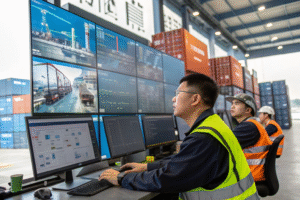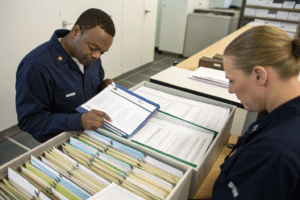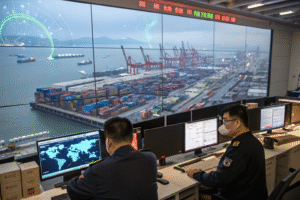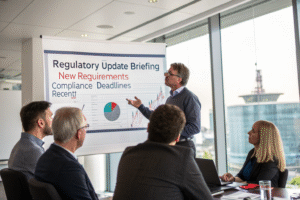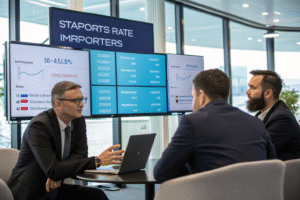Importing from China presents numerous pitfalls that can transform what seemed like a profitable venture into a logistical and financial nightmare. Many US importers, particularly those new to international trade, make predictable errors that result in delayed shipments, unexpected costs, compliance issues, and damaged supplier relationships. Recognizing these common mistakes is the first step toward building a successful and sustainable China import program.
US importers commonly make critical mistakes in supplier verification, Incoterms selection, customs compliance, quality control, and logistics planning. These errors typically cost businesses 15-40% in unexpected expenses, cause 2-6 week shipping delays, and create compliance risks that can threaten import privileges.
Let's examine the specific errors that plague US importers and practical strategies to avoid these costly missteps in your China sourcing operations.
Why do supplier selection mistakes cause the most damage?
Choosing the wrong Chinese suppliers represents the most costly and difficult-to-correct mistake for US importers. The allure of low prices often overshadows critical due diligence, leading to quality issues, intellectual property theft, and unreliable delivery.
Many importers select suppliers based solely on price without verifying business legitimacy, production capabilities, or export experience. They fail to conduct factory audits, check business licenses, or verify export records. This approach often leads to working with trading companies misrepresenting themselves as factories, or with manufacturers lacking experience with US quality standards and regulatory requirements. The consequences include inconsistent product quality, missed deadlines, and potential safety issues that trigger recalls or customs rejections.

What specific supplier verification steps are often missed?
Critical overlooked verification includes:
- Business license validation through official Chinese government channels
- Factory audit completion by qualified third-party inspectors
- Export license verification for specific product categories
- Financial stability assessment to ensure supplier longevity
- Reference checking with other US importers
- Production capacity verification matching your volume requirements
Skipping these steps often leads to partnership failures within the first year.
How can improper supplier communication create problems?
Communication failures include:
- Assuming English proficiency without verifying translation capabilities
- Relying solely on email without established alternative channels
- Failing to document requirements in clear, specific terms
- Not establishing regular check-in schedules for production updates
- Overlooking cultural differences in business communication styles
These communication gaps result in misunderstandings about specifications, timelines, and quality expectations.
How do Incoterms selection errors impact costs and risks?
Incorrect Incoterms choices represent one of the most financially damaging yet easily corrected mistakes. Many US importers select terms based on supplier preference or simplicity rather than proper risk and cost analysis.
The most common error involves accepting EXW (Ex Works) terms without understanding the operational complexity and hidden costs of managing China-side logistics. Similarly, many importers choose FOB (Free on Board) without realizing they're paying supplier markups on pre-carriage and port charges. Others select DDP (Delivered Duty Paid) for simplicity but overpay by 20-30% for services they could manage more cost-effectively. Proper Incoterms alignment with your logistics capabilities is essential for cost control and risk management.

Why is EXW often the wrong choice for US importers?
EXW creates challenges because:
- Most US importers lack China logistics capability to coordinate pre-carriage
- Hidden costs emerge from inefficient container loading and local trucking
- Communication barriers with local Chinese service providers cause delays
- Liability gaps occur during the uncontrolled China inland journey
- Documentation problems arise from disjointed logistics management
These issues typically erase any apparent price advantages from EXW terms.
What FOB misunderstandings create problems?
Common FOB misconceptions include:
- Assuming cost control when suppliers actually arrange and mark up pre-carriage
- Believing risk transfer occurs earlier than the vessel rail
- Not recognizing that supplier-chosen forwarders may prioritize supplier relationships
- Overlooking that FOB doesn't include many origin charges
- Missing opportunities for volume consolidation across multiple suppliers
Understanding these nuances prevents unexpected costs and operational issues.
What customs compliance errors create the biggest headaches?
Customs compliance mistakes generate some of the most severe consequences, including penalties, shipment seizures, and loss of import privileges. Many US importers underestimate the complexity of US customs requirements when importing from China.
Classification errors using incorrect HS codes represent the most common compliance mistake, leading to incorrect duty payments and potential penalties. Valuation mistakes involving assists, royalties, or first-sale provisions create significant compliance risks. Origin marking violations for country of origin labeling trigger customs holds and rework requirements. Additionally, many importers fail to maintain proper records or implement reasonable care processes, exposing them to audit liabilities and penalties.

How do HS code classification errors cause problems?
Classification mistakes lead to:
- Underpayment of duties resulting in back-payments and penalties
- Overpayment of duties creating unnecessary costs
- Customs examinations triggered by suspicious declarations
- Seizure of goods for intentional misclassification
- Lost preferential opportunities for properly classified goods
These errors are easily avoided through proper classification processes.
What valuation errors commonly occur?
Frequent valuation mistakes include:
- Incorrect reporting of assists like molds, tools, or engineering
- Improper handling of buying commissions and agency fees
- Missing royalty payments related to imported goods
- First-sale rule misapplication in multi-tiered transactions
- Incorrect transportation cost allocation in customs value
Proper valuation requires understanding complex rules beyond simple invoice amounts.
How do quality control failures damage import businesses?
Quality control represents one of the most frequently underestimated aspects of China importing. Many US businesses assume product quality will match samples or specifications without implementing proper verification processes.
The most common error involves skipping pre-shipment inspections to save time or money, resulting in defective goods arriving in the US. Others rely on supplier-provided inspection reports without independent verification. Many importers fail to establish clear, measurable quality standards upfront, leading to subjective quality disagreements. Additionally, businesses often neglect to plan for the time and cost of sorting, reworking, or disposing of defective products that clear US customs but don't meet market requirements.

What inspection timing mistakes cause quality problems?
Common inspection timing errors include:
- Inspecting too early before full production completion
- Checking too late after packaging prevents thorough examination
- Conducting single inspections for multi-phase production
- Skipping initial production checks that catch process issues
- Neglecting loading supervision allowing product substitution
Proper inspection timing is crucial for effective quality control.
How do unclear specifications create quality issues?
Specification problems include:
- Vague requirements allowing subjective interpretation
- Missing critical dimensions or performance standards
- Inadequate packaging specifications leading to shipping damage
- Unclear material requirements enabling unauthorized substitutions
- Missing testing protocols for verification of compliance
Detailed, measurable specifications prevent quality disputes and defects.
What logistics planning errors create delays and excess costs?
Logistics miscalculations transform what should be predictable supply chain operations into constant firefighting. Many importers fail to account for the complexity and variability of international shipping from China.
Common mistakes include underestimating transit times and failing to build buffer stock, resulting in stockouts. Many importers don't understand seasonal shipping patterns and peak season impacts, leading to unexpected delays and cost increases. Others fail to diversify shipping routes and ports, creating vulnerability to disruptions. Additionally, many businesses neglect to establish clear logistics performance metrics, preventing continuous improvement and cost optimization.

How do transit time miscalculations impact operations?
Transit time errors include:
- Using ideal timelines rather than realistic averages
- Ignoring seasonal variations during peak shipping periods
- Overlooking port congestion patterns at major gateways
- Missing customs clearance time in total transit estimates
- Neglecting inland transportation time from US ports
Realistic timeline planning prevents stockouts and production disruptions.
What peak season mistakes create the most problems?
Seasonal shipping errors involve:
- Failing to book space early before capacity constraints
- Not anticipating surcharges that increase costs significantly
- Underestimating congestion impacts on port operations
- Missing cut-off dates for holiday inventory requirements
- Neglecting carrier allocation agreements for guaranteed space
Understanding seasonal patterns is essential for reliable shipping.
Conclusion
The most successful US importers avoid common mistakes by implementing systematic approaches to supplier management, Incoterms selection, customs compliance, quality control, and logistics planning. They verify suppliers thoroughly, choose Incoterms aligned with their capabilities, maintain rigorous customs compliance, implement robust quality assurance, and plan logistics with realistic timelines and contingency options. By learning from these common errors, new and experienced importers can build sustainable China sourcing programs that deliver consistent quality, reliable delivery, and predictable costs. The key lies in recognizing that successful importing requires specialized knowledge and processes rather than simply extending domestic procurement practices to international suppliers.

